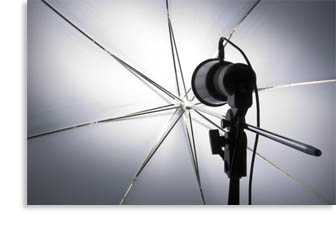Film vs. Digital
Photography school students will gain experience working with film and digital photography. There are more types of film than a photographer would likely use professionally. Polaroid film for instant photos, for example, would not likely be used professionally. Others, like Kodak's Advantix, may have been used at one time but are no longer marketed. Today's photographers primarily use transparency film or 35mm film, which is named for the width of the film. 35mm film was originally developed for motion pictures and modified for still use. Transparency film is available in a range of sizes starting at 35mm and ranging to 8 X 10-inch sheets.
Film has advantages for a photographer. Some of these include:
- Longevity: Transparency film created with the Kodachrome process can last 200 years, longer than other films. This film is highly valued for slide production and for archival photos.
- Richness: Compared to digital photographs, 35mm film can produce a superior product when guided by a knowledgeable and experienced hand. With careful processing, a photographer can bring out a richness and grain with film that cannot be achieved with a digital print.
- Higher Resolution: Film has a resolution that can be matched only by high-image resolution digital cameras.
- Speed: Digital cameras have a delay as they record the image that delays the next shot.
- Film cameras can record images in more rapid succession.
- Better for Black and White: Film will capture detail in black and white images better than a digital camera.
Film has some disadvantages as well:

- Space Requirements: When shooting in quantity, film can take up a substantial amount of space. By comparison, memory cards to record digital images are extremely small and record a significant amount of data.
- No Immediate Viewing: With film, images can't be viewed until they are developed. Digital images can be viewed immediately, allowing modifications in shooting and/or less time until the photographer is confident the right shot is on record.
- Cost of Use: Film cameras can be less expensive than a quality high-resolution digital camera, but the cost of film and processing continues ad infinitum. By comparison, memory space to record digital images can be reused and should not require replacement unless lost.
- No Selective Printing: With film, all pictures must be processed for printing. With digital imaging, photographers can choose select photographs for printing.
Thus, the advantages of digital cameras are as significant as the advantages of film cameras:
- Lower Ongoing Cost: The ongoing cost of shooting with a digital camera is lower than film because of reusable memory cards. This may give photographers the freedom to shoot more pictures without concern for the cost, since they can immediately observe the images and select only the best or more appropriate images for printing.
- Time Saving: Contrarily, digital cameras may also save photographers time since they can look immediately and be sure they obtained the right photo, rather than taking more out of concern for getting the "right" shot.
- No Changing Film: Since memory cards can now store large numbers of photographs, photographers do not need to interrupt shooting to replace film.
- Easy Modification: While film images can be scanned into a computer for modification, the success depends on the quality of the scanner. Digital images downloaded directly to a computer can be easily modified, edited, and enhanced using a photography software program.
